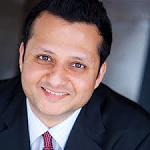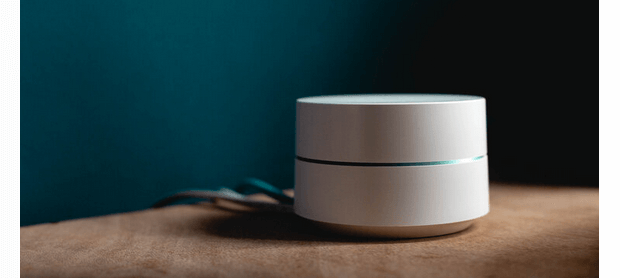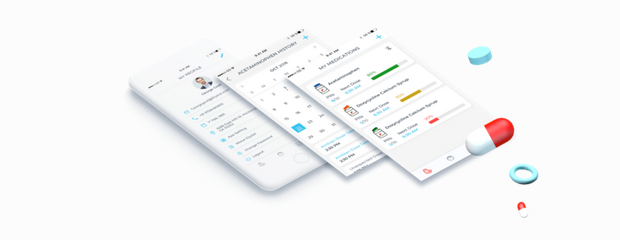Below is our recent interview with Bhavik Vyas, the co-founder and CEO of a company called ElysIoT, recently named as one of the top ten Healthcare Startups in 2019 by Healthcare Tech Outlook and one of the Top International Healthcare Companies by the International Forum on Advances in Healthcare.

Q: Bhavik, can you tell us something more about the company and your solutions?
A: I founded a company named ElysIoT that will change how people manage their use of prescription medication, specifically taking the right amount at the right time.
The flip side is called by different names, like non-compliance or non-adherence, or even overuse, but what it means is that someone is not dosing medications in a way that will provide the most benefit.
If you are supporting a family member or friend, often from far away, how do you know if they are taking their vital medications on time or at all? Or if they are taking too much?
If you are a patient, can you always remember what medications to take and at what times? Do you sometimes forget or rationalize that it’s not that important? Since the average patient takes three prescriptions, taking them all at the correct times can be overwhelming.
Of course, some people do well with the pillboxes where you can sort your pills by the day and even morning or evening. But many others still get confused and lose track, and with a separate pill box, you have a bunch of pills but the instructions about dosing and even what kind of pill it is, are no longer with the pills themselves. For someone not sure, this can be dangerous.
For an idea of the magnitude of this issue, half of the 4.2 billion prescriptions issued in the US are not taken as prescribed, and even people with chronic conditions like diabetes and high blood pressure, that cause events like heart attacks and strokes, take only to 50-60% of medications as prescribed.
By developing a smart prescription bottle cap, what we refer to as a MagicCap that is part of a complete medication adherence system, we are targeting the caregivers in our lives – these are the people that are helping to support someone who is older or in poor health. But our system, which is an app plus cap, is also appropriate for someone who is managing medications on their own, and just needs some help.
 Recommended: An Interview With Omer Granit, The Founder & CEO Of MIXER
Recommended: An Interview With Omer Granit, The Founder & CEO Of MIXER
Q: Can you give us insights into your solution?
A: Our research into what the evidence shows, convinced us that an innovative and useful solution would involve potentially both a patient and caregiver, depending on circumstances, and that we had to develop an “ecosystem” and not just a pharmaceutical bottle cap or alarm.
Our platform consists of these critical elements:
Intelligent setup and reminders
• Optical character recognition: To make initial configuration simple and error free, OCR technology enables the caregiver or patient to scan the pill bottle label and load the information into the system.
• Auto-identification of medications. If the OCR technology is not used, the caregiver or patient can easily select their medications from a pick list by only typing in the first few letters.Our artificial intelligence algorithms determine the proper time to remind the patients to take their medication.
• At the specified time for taking the medication, the MagicCap beeps and illuminates. If, after a user defined time, for example 30 minutes and the prescription bottle has not been opened, MagicCap again beeps and lights up. If after an additional user defined time i.e. 60 minutes and the bottle has still not been opened, the cap beeps/illuminates again and sends an alert to the caregiver for possible intervention.
• Double dose alerts. If the patient opens the prescription bottle within a specific period after taking the medication, the MagicCap will issue double dose alerts.
• Pill bottle locator: The caregiver and or patient can click on a medication name in the list, and the corresponding MagicCap will beep.
Drug and disease information
• Drug interaction checker. If the patient is taking multiple medications, our system will allow for checking if there any associated risks or side effects. This is particularly important when someone starts a medication or supplement, and can be difficult to find in multiple-page package inserts.
• If the patient or caregiver wants a reminder of why the drug is being taken, which is rightfully critical to actually taking it, that is available on demand by clicking on the drug name. We hope ultimately to offer content developers the opportunity to test which kinds of information have the most impact.
• Likewise, a reminder of whether to take the drug with food or not, or whether it matters, is a click away
• Lowest cash price indicator. Using zip code, our system can identify the lowest refill price, which can be much lower than insurance copays, including Medicare.
Multiple Means of Conveying Information
• Alexa integration for voice interaction
o Alexa, how many statin pills do I have left?
o Alexa, when did Nancy take her last metformin dose?
o Alexa, how many times last week has David missed his doses of Prozac?
• Web portal + mobile app. Our secure web portal and app permit both caregivers and patients to easily view historical as well as real-time information. Users can view all medications, when taken or when missed, and the exact times medications have been taken.
Q: What makes you stand out from the competition?
A: The competition primarily offers prescription bottle caps that chirp and light up when a dose needs to be taken, and/or apps that are basically alarm clocks. We address “when, how and why” to dose.
After all, that is the information that we all need to take any action. You know when, how and why to go to work, to attend an event, etc. Why should people who need medication be offered any less, in the moment that they need it the most?
It is our complete solution to this major problem that differentiates us. We can better support patients who need it, involve the caregiver if/as needed, and can intervene with the patient’s selected supporters, when the patient begins to miss dosing.
Our solution allows in future iterations for “hooks” into EHRs, so there can be documentation for physicians, pharmacists, and other health professionals to see and act on, for better-informed care. And for patients, we will also offer integration with other devices and functions are important to them.
 Recommended: Custom-Interiors Specialist Ideoli Creates Vibrant Products For Its Progressive Partners Located Around The World
Recommended: Custom-Interiors Specialist Ideoli Creates Vibrant Products For Its Progressive Partners Located Around The World
Q: What are your plans for the future?
A: • Apple Health Integration. Apple has recently opened its platform to enable us to not only manage medication dosing but also to track the patient’s overall health.
• Sharing de-identified health data with other players in the health system, such as product manufacturers, whose educational programs can benefit from seeing dosing broken out by user variables. Of course, any data are shared with informed consent when the app is first set up.
• ElyCare. If a patient is missing doses and has “fallen off the map,” our vision is that by working with one or more national platforms, ElyCare can dispatch someone to the home, with prior consent. If dosing is then accomplished, there can be video verification for the caregiver’s peace of mind.
• Automatic requests for refills to the patient’s pharmacy, to help the app be a more full-service solution, if that is more economical than the cash price.
• Physician/pharmacy/PCMH EHR integration. If a patient’s BP is rising, is it because the drugs are not working or they were never taken? This is an important answer.
• Integration with health wearables toward economic incentives. Patients often use wireless-enabled wearable technology devices that measure data such as the number of steps walked, heart rate, quality of sleep, steps climbed, and other personal metrics involved in fitness. Increasingly, in plan design, staying active results in immediate and tangible benefits, such as discounts on premiums or reduced deductibles. Dosing properly could potentially be part of such incentives.
• Improved health through self-monitoring. The popularity of wearable devices speaks to self-quantification and self-directed health monitoring. These are making inroads with all age groups, and can integrate with personal safety functionality, such as fall alerts and personal alarm systems, as well.



